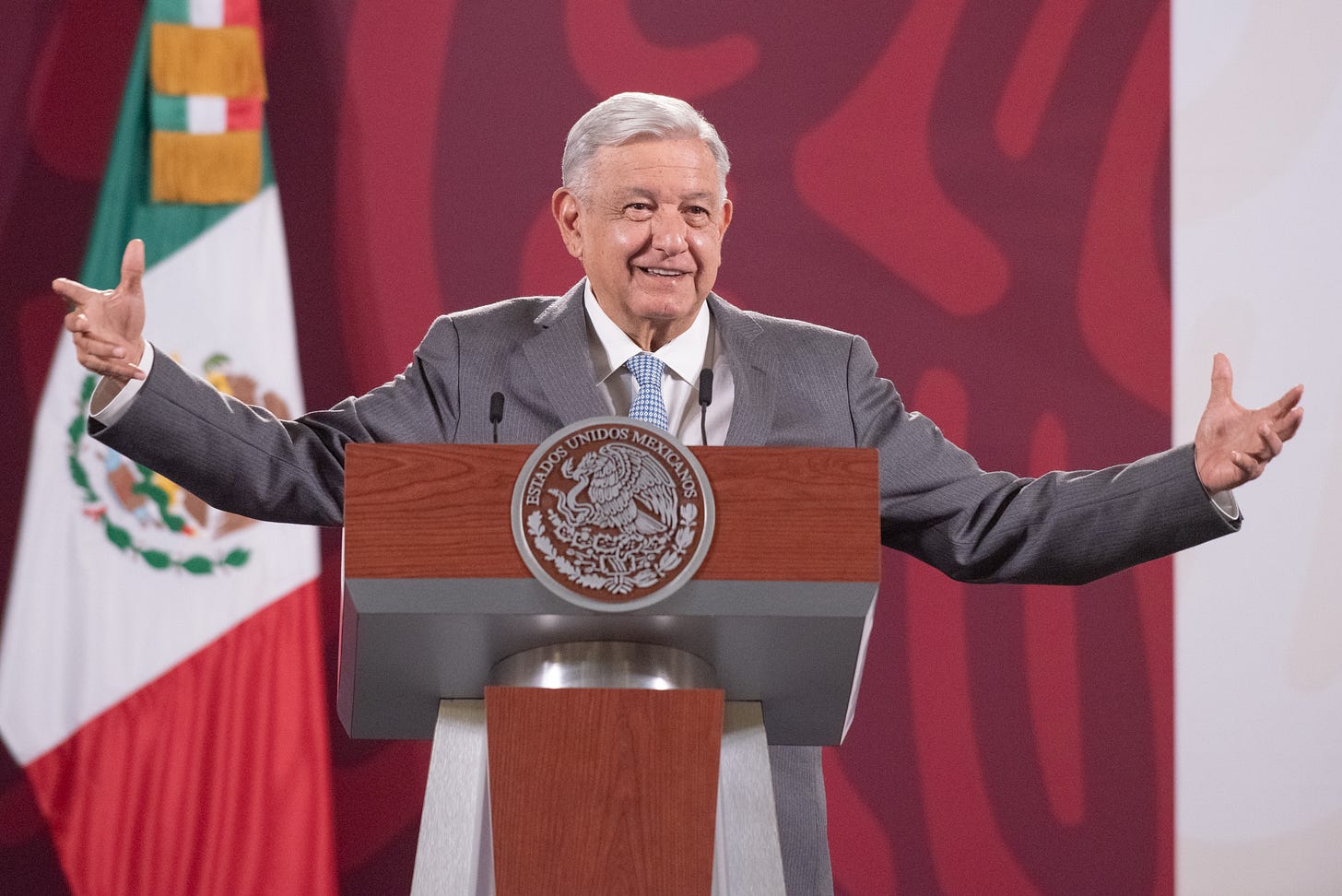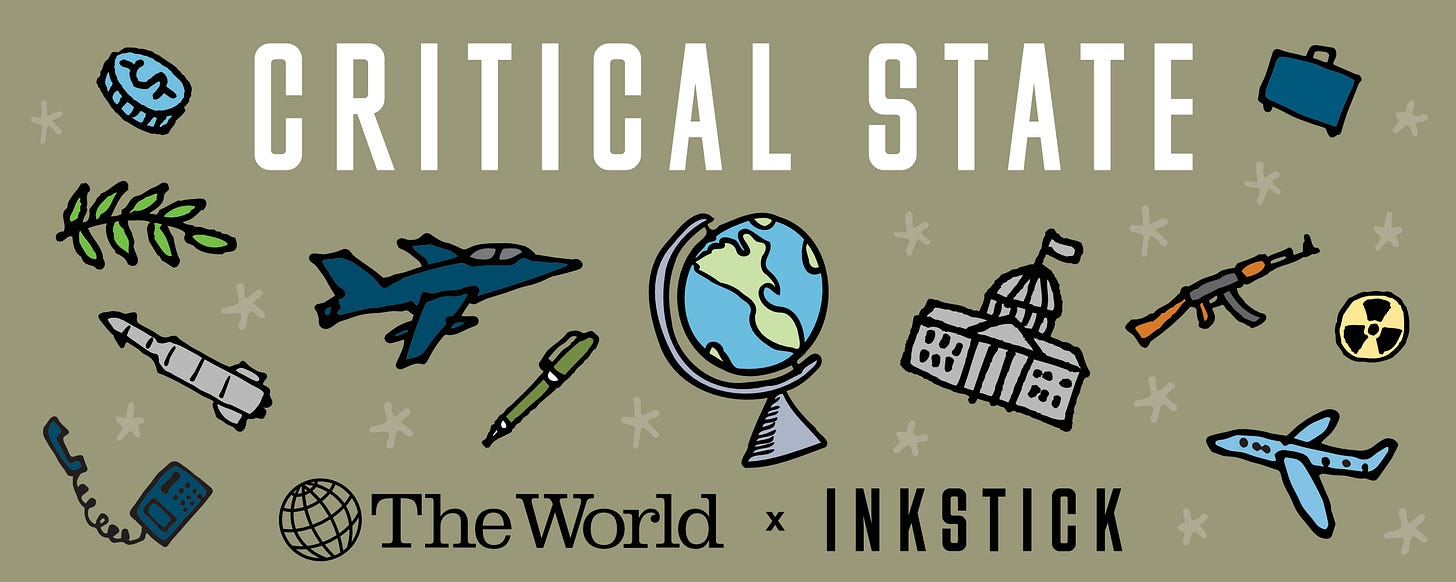Critical State: Cry for Me, Argentina
If you read just one thing … read about Argentina’s admiration for Trump!
In The Dial, Lucia Cholakian Herrera writes about how Argentina’s right found a model in former US President and current Republican presidential candidate Donald Trump. It’s a report on “a broader backlash against left-wing politics that has quietly taken hold in Argentina, largely fueled by those who feel left behind by progressive policies — and have found a model for rebellion in Donald Trump and his supporters.” That will remain true whether or not Trump wins in November.
Argentina was once considered “a bastion of progressive politics.” Still, there was “fertile ground” for populism: “The country’s chronic problem with inflation seemed unstoppable in 2023, with a staggering 211% price rise over 12 months. Daily life had become increasingly difficult, and voters were eager for new solutions.”
Though roughly the same percentage of Argentines support Trump as support Harris, “the symbols and rhetoric of Trump’s Make America Great Again (MAGA) movement have proved more resonant for Argentinian politicians than those of Harris’s campaign.” His supporters see him as a powerful person who does what is needed for his country. And Javier Milei, the current far-right president of the country, is clearly modeling himself after Trump and the MAGA (here, Make Argentina Great Again) movement.
If You Read One More Thing: Saving History
M.Z. Adnan writes for Hyphen Online about the archivists across the globe working to save Palestinian history.
The context is this: “As of last month, UNESCO has verified damage to 69 sites in Gaza since October 2023, among them archaeological areas, monuments, and buildings of historical and artistic interest. A preliminary report issued in January by Librarians and Archivists with Palestine documented the names of heritage advocates killed by Israeli bombardment.”
There are efforts to establish archival and cultural sites that can exist outside of Gaza and the West Bank: the Palestinian Museum Digital Archive was set up in Birzeit in 2018. “Elsewhere, the collection and digital archiving of oral histories has served to preserve narratives at risk of being lost. Over the past four years, Nour Alsholi, a London-based Palestinian artist born in Jerusalem who is currently serving as creative director of Palestine House — a new space devoted to Palestinian culture in London — has collected more than 70 testimonies from Nakba survivors for her project, Refugee Chronicles.” Still, records — court documents, records from educational institutions, municipal letters — are being lost in bombardment. And personal memory — family photo albums, for example, or children’s report cards — is being destroyed, too.
The Mexican Left

In Phenomenal World, Camilo Ruiz Tassinari wrote about “Lopezobradorismo,” “without a doubt the most significant political movement to have emerged in Mexico over the past three decades.” Morena, its political party, has a new leader, Claudia Sheinbaum, who won the presidential election with 60% of the vote in June. But Tassinari is interested in looking back at AMLO.
“When he came to power in 2018, Andrés Manuel López Obrador (AMLO) promised to contain unbridled neoliberalism and end political violence.” And indeed, AMLO did pass minimum wage laws and instituted new infrastructure programs and pension plans. Yett, Tassinari writes, “Two key planks of Morena’s platform — curbing military power and raising taxes on Mexico’s wealthy — were abandoned before AMLO’s inauguration. A third — resisting the US’s inhumane treatment of migrants — was abandoned less than a year into his presidency.”
Tassinari argues that AMLO was ultimately unable to challenge elites and that, while AMLO presents himself as fighting for the poor against the rich, “The truth is that he has governed not just with the oligarchy, but through the oligarchy, and for the oligarchy.”
Deep Dive: Anti the Anti
In a new paper at Critical Research on Religion, Shaul Magid examines the new anti-Zionist Jewish left — and how it itself is an expression of the “Zionization” of Judaism. How, Magid asks, can progressive Jewishness move beyond anti-Zionism, “and in doing so move past Zionization and begin to construct a New Radical Jewish Diasporism that would include new forms of religious/spiritual expression not bound by fidelity to Israel.”
Magid begins by putting this moment of the Jewish Left in the context of the last century: Though there are deep roots of anti-Zionism on the Jewish Left, Magid argues that it may mean something different now than it did in the past.
His tour of the past century includes Mordechai Kaplan’s 1955 work A New Zionism, which showed “Kaplan was quite aware of the problems that Zionism faced that remained largely under the radar for most American Zionists, including the problems of minorities and the future of Israel’s democracy.”
Magid asserts that the New Jewish Left began in earnest in 1962 and started morphing into a return to Jewishness in 1967. At this time, however, he stresses, it was still considered possible to be a radical leftist and a Zionist (for example, some argued as leftists that America’s antisemitism was unsolvable and aliyah was the only solution). Magid argues that that’s in part because of how Israel was perceived at the time: to some, it was still a socialist dream world.
“I do not think the radical Zionist left could survive as the occupation became more of a reality. The incongruity was too acute,” writes Magid. But, he adds, “the critical Jewish Zionist left could not survive the mainstream Zionization of American Jewry in the 1970s.”
He also writes that liberal Zionism became of the moment in the 1980s. Magid puts liberal Zionists into three buckets: “post New Left liberals such a Michael Walzer, some neoconservatives like David and Yoram Hazony (who later abandoned Liberal Zionism), some younger liberal Jews such as Jill Jacobs, founder of T’ruah, a Jewish social justice organization, and a slice of Modern Orthodoxy, for example David Hartman, Jonathan Sacks, and Yitz Greenberg.”
Liberal Zionism didn’t change its core platform for 40 years, he writes, but the country of Israel changed in this time. And disillusionment, plus the gap between Jewish education and reality, has led to “an open proclamation of anti-Zionism.”
But Magid believes that “the ‘anti’ of today’s Jewish anti-Zionism for some is not as much a repudiation of the state as much as a repudiation of Zionism as defining diasporic Judaism and Jewry.”
“Perhaps now,” he writes, “Jews on the Left can begin to refocus away from the critique of a state that once determined their Jewishness, something that may have been a necessary stage in its development, to a diasporic project or reviving a Jewish religo-culture that includes a non-normative religiosity that fully embraces progressivism and its aspirations for universal equality, anti-coloniality, and justice.”
Show Us the Receipts
Ursula Knudsen-Latta wrote about the draft in the United States. The US doesn’t use the draft at present, but until this day “young men must continue to register for the Selective Service System.” Knudsen-Latta asserted that “This is but one undeniable example of how militarism — the nonstop preparation and march toward war — has taken root and entrenched itself into our everyday lives. Most consider it perfectly normal to register for the draft with barely a thought given to what you are forced to sign up for.”
Shirin Jaafari reported on how dire life is in Gaza one year after Hamas’s attack on Israel. As Jaafari put it, “Israel’s response has made most of Gaza largely uninhabitable. Some 42,000 have been killed, according to health officials, and those who have survived lack basic necessities like shelter, food and clean water. Health care and humanitarian workers say they struggle to provide care in the face of daily Israeli bombardments and red tape…For many people in Gaza, food has become a luxury they can’t afford.” The Israeli military, in response to the piece, said Israel is following international law.
Sushmita Pathak examined why Bengaluru is returning to the water well, of all things. Vishwanath Srikantiah is an urban planner who, through his Million Wells for Bengaluru project, is bringing water wells back to life. As Pathak explained, “Small, shallow wells could hold the key to alleviating Bengaluru’s ongoing water problems. Using age-old, well-digging techniques, they help residents tap into a forgotten water source: the shallow aquifer. For centuries, Indians depended on open wells. However, with the advent of deep drilling technology, traditional wells fell out of use. Now, in an era of climate change, Vishwanath said, wells are a simple yet effective choice to make the city more water-secure.”
Well-Played
Not again.
She’s just a girl, but she’s on fire.
An old take on the new year.
We know it’s you, Timothée.
First time?
The grift that keeps on giving.
Critical State is written by Emily Tamkin with Inkstick Media.
The World is a weekday public radio show and podcast on global issues, news, and insights from PRX and GBH.
With an online magazine and podcast featuring a diversity of expert voices, Inkstick Media is “foreign policy for the rest of us.”
Critical State is made possible in part by the Carnegie Corporation of New York.






